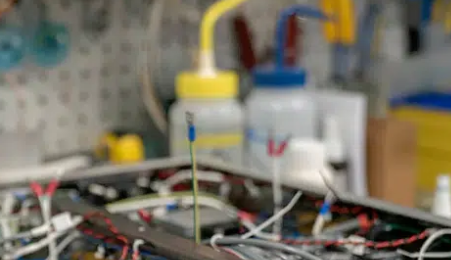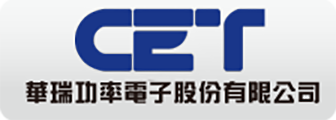Power Module : Working Principle, Structural Features, and Process
A power module is an electronic device used to convert one form of electrical energy into another for supply to specific electronic systems or devices. It typically comprises an input terminal for receiving the raw power source (such as AC or DC) and one or more output terminals for providing converted and regulated electrical energy. This article summarizes the working principle, structural features, process flow, selection parameters, and design considerations of power modules.

Working Principle of Power ModuleThe working principle of a power module is based on power electronics technology and control circuitry. Its core consists of switching power devices and control circuits. The following are detailed operational steps of power module operation:
1. Input Voltage Conversion
The power module first receives input voltage from the power line, typically AC.
Next, through rectification circuitry using diodes or bridge rectifiers, AC is converted into pulsating DC.
Subsequently, filtering circuits utilize capacitors to remove the pulsation, resulting in stable DC.
2. Output Voltage Regulation
The converted DC enters a voltage regulation circuit for voltage regulation.
The voltage regulation circuit operates using feedback control. Specifically, it compares the difference between the output voltage and a reference voltage and controls the regulator’s operation based on this difference.
Through this regulation, the output voltage is maintained at the set stable value.
3. Role of Switching Power Devices
During the power conversion process of the power module, switching power devices (such as MOSFETs, BJTs, IGBTs, etc.) play a crucial role.
When the switching device is conducting, the power module can convert input energy into output energy. The primary function of the switching device is to achieve intermittent energy conversion to provide the required stable voltage or current.
When the switching device receives an input or control signal, it generates corresponding switch signals to control its state.
4. Role of Control Circuits
Control circuits are another important component of the power module responsible for precise regulation and stabilization.
Feedback circuits monitor changes in output voltage or current and send feedback signals to comparators. This allows the power module to adjust output energy promptly based on the feedback signal to meet various circuit requirements.
5. Protection Mechanisms
Power modules typically feature various protection mechanisms such as overload protection, overvoltage protection, and short circuit protection.
Overload protection monitors the output current and limits or cuts off the output when the current exceeds a set value.
Overvoltage protection monitors the output voltage and automatically cuts off the output power when the voltage exceeds a set value.
Short circuit protection similarly operates by monitoring the output current. When a short circuit is detected, it promptly cuts off the power to prevent damage.
Structural Features of Power ModuleThe structural features of power modules are summarized as follows:
1. Modular Design
Power modules typically employ modular design, making the entire power system more compact and efficient. Each module has independent functionality, allowing for flexible combinations and extensions based on actual needs. This facilitates users in customizing power solutions according to specific application scenarios.
2. High Integration
Power modules integrate numerous electronic components and circuits internally, such as transformers, rectifiers, and filters. The optimized design of these components and circuits endows the power module with high efficiency and stability.
3. High Reliability
Power modules undergo rigorous production processes and quality control, resulting in high reliability. Additionally, internal redundancy design and protection circuits effectively prevent damage to the system due to abnormal conditions such as power fluctuations, overcurrent, and overvoltage.
4. Ease of Maintenance
Due to the modular design of power modules, when a fault occurs, users can conveniently replace the faulty module, thereby reducing maintenance costs and time. Furthermore, the modular structure facilitates upgrades and modifications to the power system.
Process Flow of Power ModuleThe production process of power modules involves multiple steps, from material preparation to final testing and quality inspection, with each step being crucial. Below is a simplified description of the operation process of power module production:
1. Material Preparation and Bill of Materials (BOM) Verification
Based on the design drawings of the power module and the BOM (Bill of Materials) list, prepare the required components, PCB boards, connecting wires, insulation materials, etc.
Check the quantity, model, and specifications of the materials to ensure accuracy.
2. PCB Board Processing and Component Soldering
Clean and dry the PCB board to remove surface stains and moisture.
According to the design drawings, solder the components onto the PCB board. Pay attention to soldering temperature and time control to avoid solder joints or poor soldering.
3. Power Circuit Connection and Insulation Processing
Based on the circuit diagram of the power module, connect the power input and output lines.
Insulate exposed wires and connection points to ensure safety.
4. Functional Testing and Performance Debugging
Conduct functional testing on the power module to check if input and output voltage and current are normal.
Based on the test results, perform performance debugging to optimize the efficiency of the power module.
5. Overall Assembly and Enclosure Installation
Assemble the soldered PCB board, connecting wires, and other components into a complete power module.
Install the enclosure of the power module to ensure reliable fastening.
6. Final Testing and Quality Inspection
Conduct final testing on the assembled power module, including voltage stability, ripple coefficient, load capacity, and other indicators.
According to quality inspection standards, screen and classify the power modules to ensure product quality.
7. Packaging and Warehouse Entry
Package the qualified power modules, indicating model, specifications, quantity, etc.
Store the packaged power modules in the warehouse, awaiting shipment or subsequent use.
Selection Parameters of Power ModuleDuring the process of selecting power modules, it is essential to consider a series of key parameters to ensure that the chosen power module can meet specific application requirements. Below is a detailed consideration of these parameters:
1. Input Voltage Range
Firstly, it is necessary to determine the input voltage range of the power module, i.e., the range within which it can operate normally. This depends on the power supply situation in the application, such as battery-powered or AC grid-powered. Ensure that the selected module can adapt to the existing input voltage and maintain stability during voltage fluctuations.
2. Output Voltage and Current
The output voltage and current of the power module are critical parameters to meet load requirements. Depending on the power consumption and characteristics of the load, choose appropriate output voltage and current levels. Also, consider whether the current output capacity of the power module is sufficient to handle the startup impact of the load and the current requirements during normal operation.
3. Efficiency and Power Consumption
Efficiency is the ability of the power module to convert electrical energy, i.e., the ratio of output power to input power. High efficiency means less energy loss and lower heat generation. Additionally, pay attention to the module’s power consumption, especially during standby or light load, to optimize energy use.
4. Ripple and Noise
Ripple refers to the AC component in the output voltage, while noise is the interference signal generated by the power module. These parameters are crucial for sensitive applications such as signal processing or measurement equipment. Therefore, when selecting, ensure that the ripple and noise levels of the selected module are below the system’s acceptable threshold.
5. Temperature Range
The operating temperature range of the power module is also a factor to consider. In extreme temperature environments, the performance and reliability of the module may be affected. Therefore, choose a module that can operate stably within the temperature range of the application.
6. Reliability and Lifespan
The reliability and expected lifespan of the power module are important indicators for assessing its long-term performance. When choosing, consider the module’s MTBF (Mean Time Between Failures) and the manufacturer’s provided warranty period.
7. Size and Packaging
The size and packaging of the power module are also factors to consider during the selection process. Ensure that the selected module can fit within the space constraints of the application and is easy to integrate into existing systems.
8. Certification and Compliance
The selected power module should comply with relevant safety standards and regulatory requirements, such as UL, CE, etc. This helps ensure the safety and compliance of the power module.
9. Cost
Last but equally important is cost consideration. While meeting all performance requirements, strive to choose a cost-effective power module to optimize the overall cost-effectiveness of the system.
During the design and use of power modules, the following operational issues should be noted:I. Design Phase Considerations1. Clarify Requirements and Specifications
Before designing the power module, clarify the system’s requirements for power, including voltage, current, power, efficiency, and other specifications.
Fully consider the working environment of the module, such as temperature, humidity, vibration, and other factors that may affect the performance of the power supply.
2. Select Appropriate Topology
Choose the appropriate power supply topology according to the requirements, such as linear power supply, switching power supply, etc., to achieve high efficiency, stability, and reliability.
3. Optimize Circuit Layout and Wiring
Reasonably layout circuit components to reduce interference and losses.
Adopt the principle of wide and short wiring to reduce resistance and inductance, thereby improving power supply efficiency.
4. Redundancy and Protection Design
Consider redundancy design for the power module to improve system reliability and stability.
Design overvoltage, overcurrent, overheating, and other protection measures to prevent module damage or safety accidents.
5. Electromagnetic Compatibility (EMC) Design
Consider the electromagnetic compatibility of the power module and use filtering, shielding, and other technologies to reduce interference with other devices.
II. Considerations During Use1. Proper Installation and Connection
Follow the manufacturer’s installation guide to ensure the power module is installed correctly and securely fixed.
Carefully inspect the connections of input and output terminals to ensure good contact, no looseness, or short circuits.
2. Adjust Parameters Reasonably
According to actual needs, set the voltage, current, and other parameters of the power module reasonably to avoid overloading or underloading.
Regularly check parameter settings to ensure consistency with actual requirements.
3. Monitoring and Maintenance
Regularly conduct status checks on the power module, including monitoring parameters such as voltage, current, and temperature.
If any abnormal conditions are detected, take timely measures to address them, such as cleaning dust or replacing damaged components.
4. Heat Dissipation and Working Environment
Pay attention to the impact of electromagnetic interference and mechanical vibration in the working environment on the power module and take corresponding measures for protection.
5. Training and Operational Standards
Provide training for personnel using the power module to ensure they understand the working principle, operation methods, and safety precautions of the module.
Establish operational standards to ensure that personnel operate in accordance with the standards, avoiding problems caused by improper operation.
在线留言询价
- 一周热料
- 紧缺物料秒杀
| 型号 | 品牌 | 询价 |
|---|---|---|
| MC33074DR2G | onsemi | |
| RB751G-40T2R | ROHM Semiconductor | |
| TL431ACLPR | Texas Instruments | |
| CDZVT2R20B | ROHM Semiconductor | |
| BD71847AMWV-E2 | ROHM Semiconductor |
| 型号 | 品牌 | 抢购 |
|---|---|---|
| ESR03EZPJ151 | ROHM Semiconductor | |
| BP3621 | ROHM Semiconductor | |
| BU33JA2MNVX-CTL | ROHM Semiconductor | |
| STM32F429IGT6 | STMicroelectronics | |
| TPS63050YFFR | Texas Instruments | |
| IPZ40N04S5L4R8ATMA1 | Infineon Technologies |
- 周排行榜
- 月排行榜
AMEYA360公众号二维码
识别二维码,即可关注


请输入下方图片中的验证码:






















